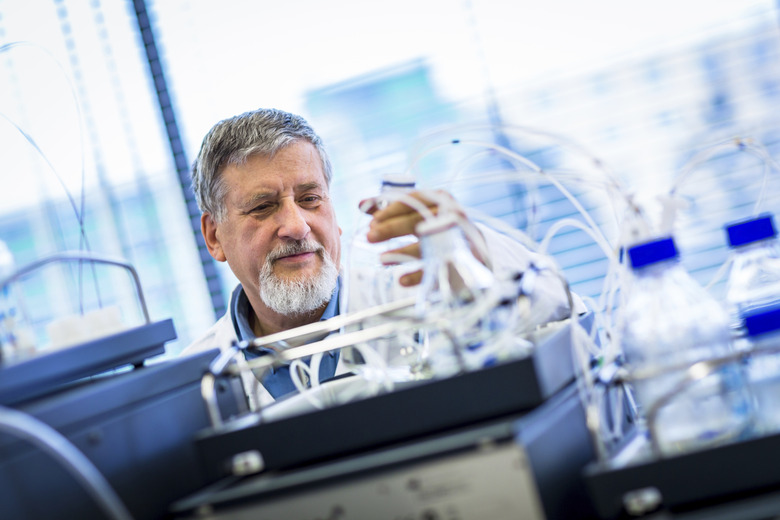Basic Components Of An HPLC
High performance liquid chromatography is a technique for the laboratory analysis of a mixture. It's an efficient type of chromatography that uses high pressure, rather than simply gravity, to propel a sample of a mixture through a column. A sample is injected, then a pump containing high amounts of pressure helps to move the sample along a packed column, where it is separated into individual components. This separation is then analyzed by a detector to yield results.
Injection Site
Injection Site
In order to be injected into an HPLC, a sample must first be dissolved in a polar liquid solvent, preferably one with known HPLC spectra so that its data can be distinguished from the sample's. The liquid solution containing the sample is placed in the instrument and is sent into the column. The actual location of the injection site depends on the brand of instruments. In most cases, the injection process is automated, but in some cases a lab worker must inject the sample using a small syringe needle.
Pump Component
Pump Component
The pump component of the HPLC unit is necessary because it provides the pressure that propels the sample through the column. Pump strength varies, but a powerful one can produce a pressure of up to 6,000 psi, or pounds per square inch, which is applied after the sample is injected. This allows the sample to pass through the column more quickly and efficiently than if it were to drip through using only the force of gravity.
Column Description
Column Description
The increased speed of a sample passed through the column by a pump allows for use of a different type of column than those used in simple liquid chromatography. The packing material in the column can have a much smaller particle size, which increases the surface area and therefore assists interactions of the sample with the column. Most HPLC columns work through polarity. The sample is dissolved in a polar solvent, and the column is made up of largely non-polar hydrocarbons. The polar parts of the sample molecule pass through the column very quickly because they are primarily interacting with the solvent, whereas the sample's non-polar components linger in the column, forming weak interactions with the column components. Therefore, the sample's components come off the column in order from most polar to most non-polar.
Detector Function
Detector Function
Detectors also vary based on the type of HPLC instrument being used. However, most function in the same basic way. A source of ultraviolet light shines on the separated sample components as they come off the column. Most organic compounds absorb a certain amount of light, so as they pass by the applied light beam, a detector can pick up how much light is absorbed. The detector also records the components' retention time based on the order in which they come off the column. This output can then be analyzed based on peak area to determine the exact nature of the sample's components.
Cite This Article
MLA
Lane, Hannah. "Basic Components Of An HPLC" sciencing.com, https://www.sciencing.com/list-7476089-basic-components-hplc/. 7 August 2017.
APA
Lane, Hannah. (2017, August 7). Basic Components Of An HPLC. sciencing.com. Retrieved from https://www.sciencing.com/list-7476089-basic-components-hplc/
Chicago
Lane, Hannah. Basic Components Of An HPLC last modified March 24, 2022. https://www.sciencing.com/list-7476089-basic-components-hplc/
